Anatomy of a pair of Quad Skates
What we call quad skates or traditional skates are skates with mobile axles, and contrarily to common belief, they arrived later that inline skates! Dissection and working of these so-called dinosaurs which have made a strong comeback since a few months...
Par alfathor
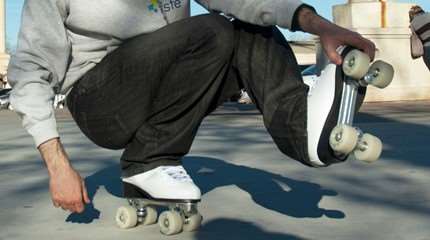
Description
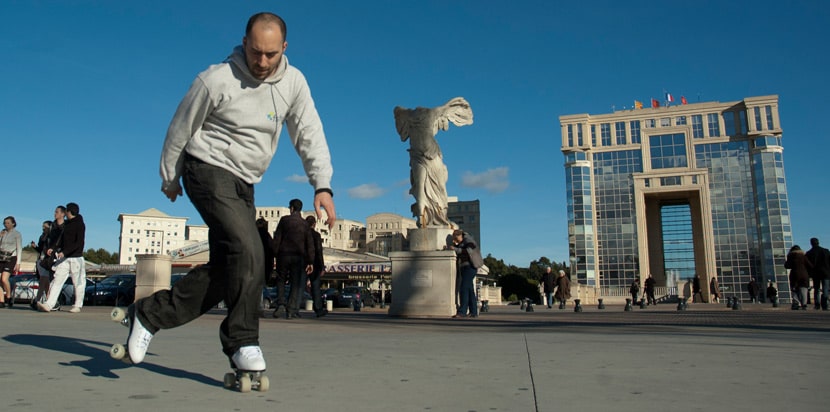
A bit of history…
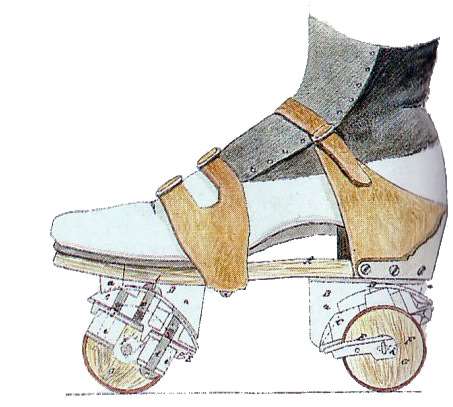 Some people think that traditional skates are older than inline skates, but they are wrong! Quad skates were born in the middle of the 19th century (Nieswizki, 1991) whereas inline skates came into the world almost one century before.
Some people think that traditional skates are older than inline skates, but they are wrong! Quad skates were born in the middle of the 19th century (Nieswizki, 1991) whereas inline skates came into the world almost one century before.
The concept was born in 1828 in the mind of James Leonard Plimpton. He had weak ankles and his doctor had advised him to do ice skating to stay healthy: he then created a skate with 4 blades paired by 2.
Then he replaced the blades by wheels. The use of mobile axles made this practice accessible to everyone. This is how the “Rocking skates” were born. In 1863, Plimpton sold his skates to rink owners and made a fortune.
Quad skates were the first skates to be manufactured on a commercial scale… It didn’t prevent inline skates to survive, but in 1870 quad skates were fashionable.
The main difference: the frames!
It is no secret: the main difference between a pair of quad skates and a pair on inline skates, it’s their frames.
Quad skates are equipped with axles or “trucks” completed with two wheels, one on each side.
What is a truck?
“Truck” is not the most explicit word. In fact it is the mobile part which links the axle of the wheels to the rest of the plate. Trucks can be made of metal, plastic or composite.
The type of bearings depends on the type of trucks
Trucks are equipped with axles 7 or 8 mm wide depending on the models. Then you should be careful when you choose your bearings!
- On 7 mm axles, you need type 607 or 627 bearings
- On 8 mm axles, opt for 608!
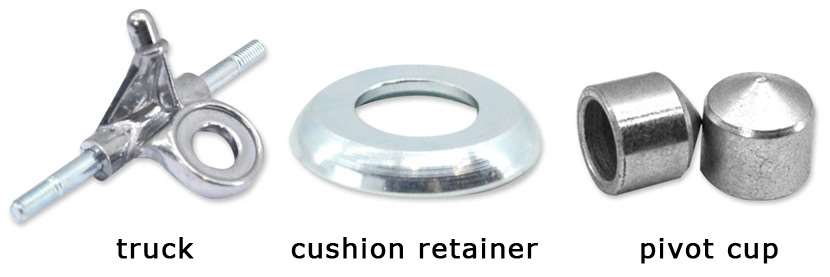
The Cushions
The cushions are pieces of plastic, polyurethane or rubber, in the shape of a sausage placed in-between the plate and the trucks. They have several functions:
- Loosening or rigidifying the articulation of the truck/frame, for it to be more or less easy to handle,
- Carrying out the cohesion between the frame and the trucks,
- Absorbing vibrations.
The Pivot Cups
They are small plastic or rubber tips inserted in-between the trucks and the plate. Just like the cushions, they absorb vibrations and improve comfort.
The Cushion Retainers
They are placed between the frame and the cushions. They reduce the force exerted on the cushions in distributing it more homogeneously so that the cushions are not squeezed.
The tightening bolts
The more you tighten them the more rigid the frame! The more you loosen them the easier to handle. You should modify the tightening according to your practice: ease to handle (slalom) or performance (speed or street skating).
The Jumper (support bar)
It carries out the cohesion between the front and the back of the plate. It rigidifies the whole in order to limit the risks of breaking and conveys more response to the skate.
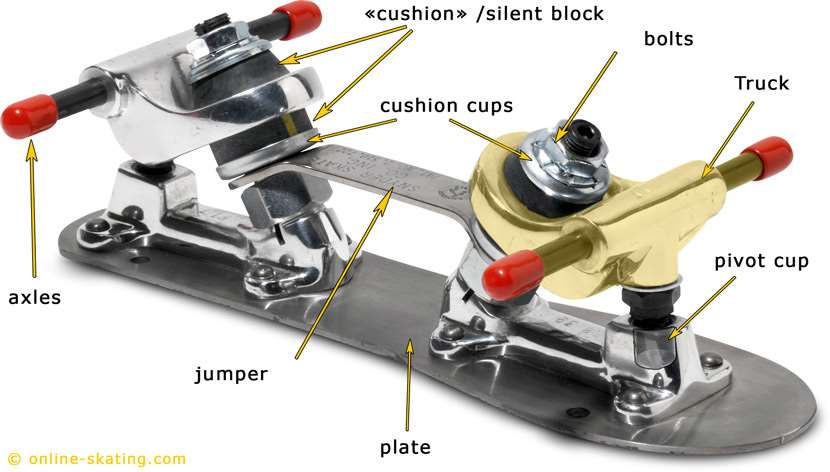
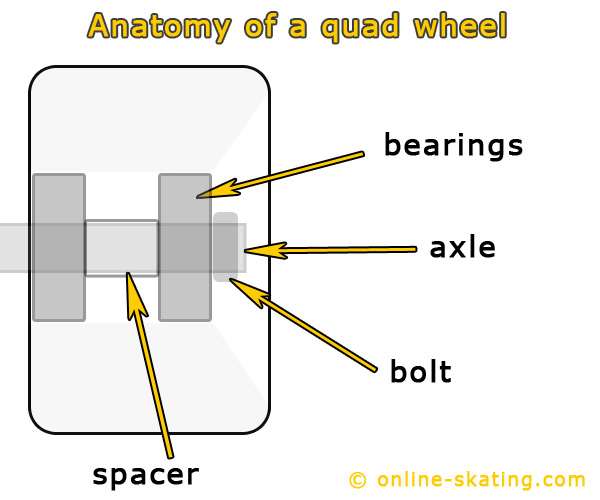 Quad wheels: a big variety of diameters and hardnesses
Quad wheels: a big variety of diameters and hardnesses
There is as much variety as in inline skating: Big, small, hard, soft, even their shapes change!
Most of the time, small hard wheels are used for indoor practice and bigger and softer wheels for outdoor practice.
In artistic skating, you use different types of wheels according to the surface (concrete, wood, synthetic surface…) and its level of adhesion (rough, slippery…)
It is a real science to determine the good type of wheels according to your needs!
A bit of anatomy…
Just like with inline skates, bearings are inserted into the core of the wheel. They are also separated with spacers. Some skaters don’t use spacers, but we advise you to keep them because they carry out a better linking between the wheel and the bearings, so that the energy is better transmitted and the rolling is better.
The main fixing difference with inline skates comes from the fact that the wheel is tightened on an axle thanks to a bolt. If you tighten too much, it will compress the bearings and reduce the rolling: you have to find the right balance.
The characteristics of quad skates according to the disciplines
Artistic skating
The artistic skaters favor rigid high-top boots to benefit from the best precision. As for the plates, they are mounted on the back. They are equipped with rather big toe stops on the front to make piques tricks easier.
Rink Hockey
The rink hockey boots are lower and quite rigid as the feet should be well supported in the skates. They are also reinforced to resist shocks.
The heel lift makes a slight rocker to the front, which favors reactivity.
The placing of the plates varies according to the disciplines
According to the considered practice, the placing of the plate under the boot may vary a lot, more on the front for jumping, centered for street skating…
Useful links
How is a rink hockey boot made?
Translated by Chloé Seyres
Photos: Alfathor
